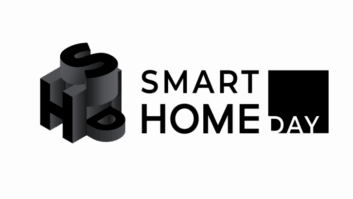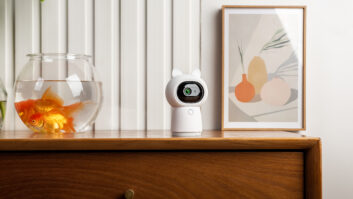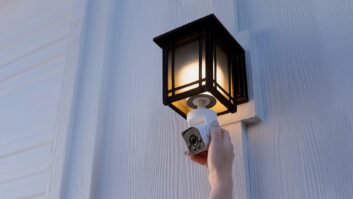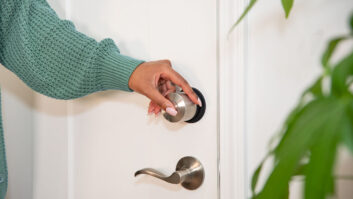
The all-important fourth quarter is just around the corner, and this year is on track to be a record-breaking one in U.S. consumer technology sales. According to the CTA, tech sales are expected to top $400 billion for the first time, and the smart home—security devices, smart speakers, and home robots—remains at the forefront of categories propelling this anticipated growth.
The smart home category, however, isn’t something new. Think microwaves and remote-controlled garage doors. Some might even remember one of the earliest innovations—The Clapper. Simple to operate, it required just the sound of clapping hands to turn home appliances on or off. Today’s smart home offerings are equally easy to use, yet far more tech-driven and expansive, giving consumers clever new ways to manage aspects of their daily lives.
“Consumers have realized that smart home products enable us to significantly better manage our time,” says Fred Towns, President of New Age Electronics. “People are juggling more today than they were 10 years ago both at work and at home. The power of technology is creating new efficiencies in their lives.”
What’s hot?
According to The Smart Audio Report, a collaboration between NPR and Edison Research, 53 million people own smart speakers and 69 percent use the devices every day. Homes with children are even more likely to use them daily.
Led by the Google Assistant and Amazon Alexa, voice-assistant technology is powering the ubiquitous smart speaker that now serves as the gateway to multiple smart home devices such as appliances, thermostats, light bulbs, smoke alarms and more. Consumers are also seeking everything from basic routers to an entire mesh network to support home technology. The newest routers are using QR codes that allow people to quickly and easily scan their code and connect up, allowing them to create the best positioning within the home based on where devices are used.
With connectivity increasingly important for consumers—and smart homes at the center of it all—this holiday season will be a busy one. Retailers will have a tremendous opportunity to educate and advise consumers who want to create their ideal version of the smart home—a place where they have the ability to make everyday household devices more efficient.
“The smart home ecosystem will be an important driver of holiday sales this year,” says Towns. “Most smart home products have become plug-and-play, which has caused interest to pique among consumers. People of all ages and lifestyles are getting into the smart home game.”
No longer just for early adopters or techies, the connected home is a concept that mainstream shoppers are embracing. There’s truly something for everyone.
So, who’s buying?
Gen Z, Millennials, Gen X and Baby Boomers—even female shoppers—all have various motivations for making the leap. It’s not a generational or gender goal to want a comfortable, enjoyable and stress-free lifestyle, and today, that puts just about anyone on the path to outfitting a smart home.
• With its growing buying power, Gen Z, those born after 1996, is primed for smart home tech. With a projected $143 billion to spend, this first fully digital generation is internet-savvy and flexible in their purchasing decisions.
• Millennials, who follow Baby Boomers and Generation X, value ease of use and thrive on the ability to access everything they can with their smartphones. They crave the cool factor such as opening the garage door by voice command, controlling song selections or turning on lights.
• Gen X, those born between 1965 to 1979, use smart technology to care for their elderly parents (Baby Boomers)—and for these folks, it’s all about adding comfort and simplicity to day-to-day routines.
• Crossing all generations, female shoppers have more say than ever when it comes to home purchases. Whether they run a household, corporation, or both, they’re quick and influential decision makers.
Keys to Success
Despite the diverse nature of these groups and their varying characteristics, they all share an optimism and interest for these exciting high-tech products. For retailers, that represents a tremendous opportunity, but also requires effectively communicating to shoppers how the smart home makes life simpler.
Having the right products is a start, but it broadens from there. Offering an extended assortment program to ensure retailers have endless options, colors and models, New Age Electronics has developed a unique build-a-box program. It features collaborative planning, forecasting, and replenishment along with exclusive skus, custom packaging options, and the advantage of mixing and matching brands to create a custom solution to set any store apart.
To recap, 2019 is tracking to be a record-breaking year for technology led by the smart home. Reference the guide below for steps to get started—it’s time to ring in the revenue and get ready for the new year!
Getting Started
• Recognize and adopt a targeted approach for different generational groups. Millennials, for instance, will be motivated to purchase by different factors than GenX-ers. Remember to speak their language.
• Present the right stock—extended assortment solutions and custom bundles allow retailers to offer a unique and compelling in-store experience.
• “Show and sell” the smart home concept—product on shelves is only part of the equation. An educated and enthusiastic sales staff can deliver the value proposition to shoppers—and keep them coming back for additional items.
Learn more about building a smart home roadmap with New Age Electronics by visiting here.
This article was sponsored by New Age Electronics.













